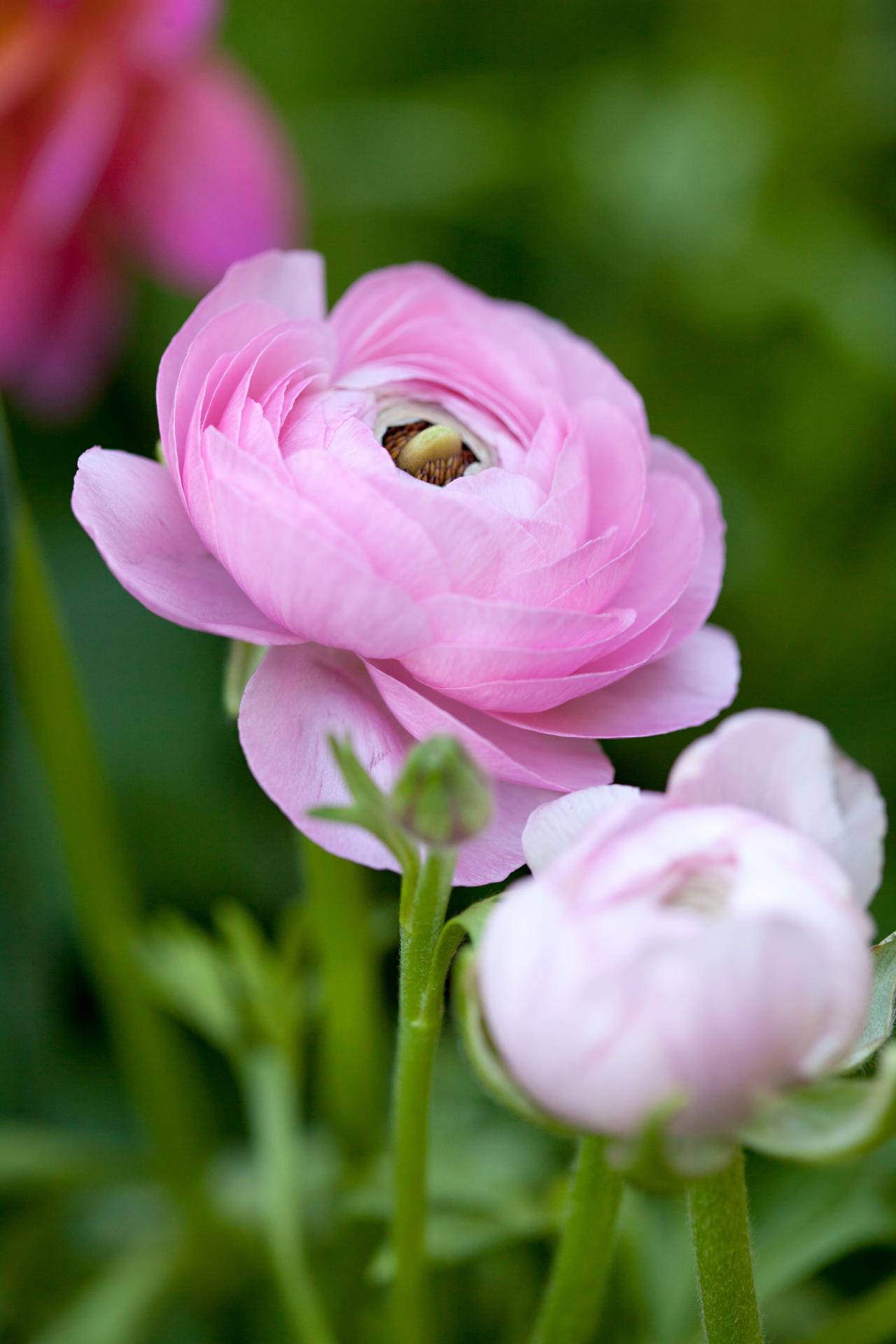| Ranunculus asiaticus | |
|---|---|
| Scientific classification | |
| Kingdom: | Plantae |
| Clade: | Tracheophytes |
| Clade: | Angiosperms |
| Clade: | Eudicots |
| Order: | Ranunculales |
| Family: | Ranunculaceae |
| Genus: | Ranunculus |
| Species: | |
| Binomial name | |
| Ranunculus asiaticus | |
How to Plant an Asiatic Lilly How to Dig Up and Transfer Narcissus Ranunculus asiaticus, commonly called Persian buttercup, produces flowers with layers of delicate petals that have a crepe paper. Ranunculus asiaticus 'Elegance Orange' (Persian Buttercup) is a tuberous-rooted plant boasting large flowers adorned with layers upon layers of beautifully structured, silky tangerine-orange petals. Reminiscent of garden roses or peonies, the flowers are borne atop thick and sturdy stems.
Ranunculus asiaticus, the Persian buttercup, is a species of buttercup (Ranunculus) native to the eastern Mediterranean region in southwestern Asia, southeastern Europe (Crete, Karpathos and Rhodes), and northeastern Africa.[1]
It is a herbaceousperennial plant growing to 45 cm tall, with simple or branched stems. The basal leaves are three-lobed, with leaves higher on the stems more deeply divided; like the stems, they are downy or hairy. The flowers are 3–5 cm diameter, variably red to pink, yellow, or white, with one to several flowers on each stem.[2] Parallels desktop for mac pro edition download.
It is a protected species in some jurisdictions, including Israel.
Persian ButtercupsGrowing from both seeds and tubers, Persian buttercup propagation is not complicated. If you desire to grow this frilly specimen in your landscape, read more to learn how to propagate Persian buttercup, Ranunculus, and which method is best for youPropagating Persian ButtercupsAnother beautiful contribution from Persia to our blooming gardens, Persian buttercup plants. Adored by florists and gardeners, Ranunculus asiaticus (Persian Buttercups) is a tuberous-rooted plant boasting brilliantly colored flowers adorned with multiple layers of delicate, crepe paper-thin petals. Sicilian Buttercup Characteristics 1. Size and Weight. Sicilian Buttercup chickens are a rather petite bird. The average weight of a Sicilian Buttercup is between 4 and 5 pounds. Paired with their tight fitting feathers, they just don’t exactly look like big birds! Their small size and large comb make them a very ideal breed for hot climates.
Cultivation and uses[edit]
Double-flowered forms, which are likely hybrids, are a popular ornamental plant in gardens, and widely used in floristry. Numerous cultivars have been selected, including 'Bloomingdale', 'Picotee', 'Pot Dwarf', and 'Superbissima'. The plants can tolerate light frost, but are not hardy at temperatures below -10 °C.[2]
'Tecolote' and 'Bloomingdale' are examples of the double-flowered plants (not shown here). The single-flowered species form is not commercially cultivated on any significant scale. By contrast, the similar-looking Anemone coronaria is widely available in single-flower 'De Caen' hybrid forms. However, as with Ranunculus asiaticus, the species form, which also has red single flowers, is not commercially cultivated.
References[edit]
- ^'Ranunculus asiaticus'. Germplasm Resources Information Network (GRIN). Agricultural Research Service (ARS), United States Department of Agriculture (USDA). Retrieved 16 January 2018.
- ^ abHuxley, A., ed. (1992). New RHS Dictionary of Gardening. Macmillan ISBN0-333-47494-5.
External links[edit]
- Media related to Ranunculus asiaticus at Wikimedia Commons
| Ranunculus asiaticus | |
|---|---|
| Scientific classification | |
| Kingdom: | Plantae |
| Clade: | Tracheophytes |
| Clade: | Angiosperms |
| Clade: | Eudicots |
| Order: | Ranunculales |
| Family: | Ranunculaceae |
| Genus: | Ranunculus |
| Species: | |
| Binomial name | |
| Ranunculus asiaticus | |
Ranunculus asiaticus, the Persian buttercup, is a species of buttercup (Ranunculus) native to the eastern Mediterranean region in southwestern Asia, southeastern Europe (Crete, Karpathos and Rhodes), and northeastern Africa.[1]
Microsoft visio for mac download. It is a herbaceousperennial plant growing to 45 cm tall, with simple or branched stems. The basal leaves are three-lobed, with leaves higher on the stems more deeply divided; like the stems, they are downy or hairy. Where can i download sims 4 for mac. The flowers are 3–5 cm diameter, variably red to pink, yellow, or white, with one to several flowers on each stem.[2]
It is a protected species in some jurisdictions, including Israel.
Asiatic Buttercup

Cultivation and uses[edit]
Double-flowered forms, which are likely hybrids, are a popular ornamental plant in gardens, and widely used in floristry. Numerous cultivars have been selected, including 'Bloomingdale', 'Picotee', 'Pot Dwarf', and 'Superbissima'. The plants can tolerate light frost, but are not hardy at temperatures below -10 °C.[2]
'Tecolote' and 'Bloomingdale' are examples of the double-flowered plants (not shown here). The single-flowered species form is not commercially cultivated on any significant scale. By contrast, the similar-looking Anemone coronaria is widely available in single-flower 'De Caen' hybrid forms. However, as with Ranunculus asiaticus, the species form, which also has red single flowers, is not commercially cultivated.

Asiatic Buttercup
References[edit]
- ^'Ranunculus asiaticus'. Germplasm Resources Information Network (GRIN). Agricultural Research Service (ARS), United States Department of Agriculture (USDA). Retrieved 16 January 2018.
- ^ abHuxley, A., ed. (1992). New RHS Dictionary of Gardening. Macmillan ISBN0-333-47494-5.
External links[edit]
- Media related to Ranunculus asiaticus at Wikimedia Commons
Asiatic Buttercup (ranunculus Asiaticus)
